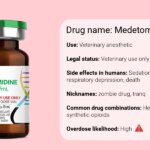Overdose rates finally on the down slope? Yes — well, maybe. It depends.
From The Guardian:
That’s certainly good news. Let’s drill down a bit.
First: we’re talking about a decline in ODs to a total of “…an estimated 101,168 deaths annually as of April 2024″… from a peak of “111,029 deaths in 2022.” About 10%. If the estimates hold, it would definitely be good news. So far, most of the reduction has taken place in the Eastern US — in the West, things have yet to improve.
What are some of the contributing factors? Experts cite “… changes in the drug supply as well as improved access to treatment and harm reduction programs.” However, one expert observes that “over the last quarter-century, there’s been no intervention that has caused a decline in overdose deaths of this magnitude.” That would suggest that the supply lines are perhaps the larger factor, since the impact of treatment and prevention programs is usually gradual.
Nora Volkow, longtime Director of the National Institute on Drug Abuse, notes that among “the most affected groups, namely Native Americans and Black American men, the death rates are not decreasing and are at the highest recorded levels.” A good reason to target those populations for future interventions.
Still another expert came up with a most surprising theory: that the unexpected appearance of xylazine (“tranq”) as an adulterant in the street opioid supply might actually have been a good thing, at least in terms of reducing ODs. His notion: “People who use drugs laced with xylazine often need to use less frequently than they do with fentanyl-laced drugs, because xylazine binds to receptors for longer. Using less often means “less rolls of the dice” that could result in overdose…”
I don’t know about that. I’ve read elsewhere that the presence of xylazine appears to make naloxone less effective for reversing an opioid overdose. Wouldn’t that increase the risk of serious consequences?
A logical starting place for a community concerned about drug use would be with data collected by their own health departments and criminal justice agencies. The goal would be to fund and implement a continuum of effective services — one that reflects the actual (and likely future) needs of their own citizens.
It helps to remember that although drug epidemics do end, societies ordinarily find themselves forced to cope with an ongoing problem related to chronic drug abuse.
Even when it’s no longer fast-growing, headlining the evening news, drug abuse will always be present, continuing to do great harm to a significant number of adults and children, in every community.













